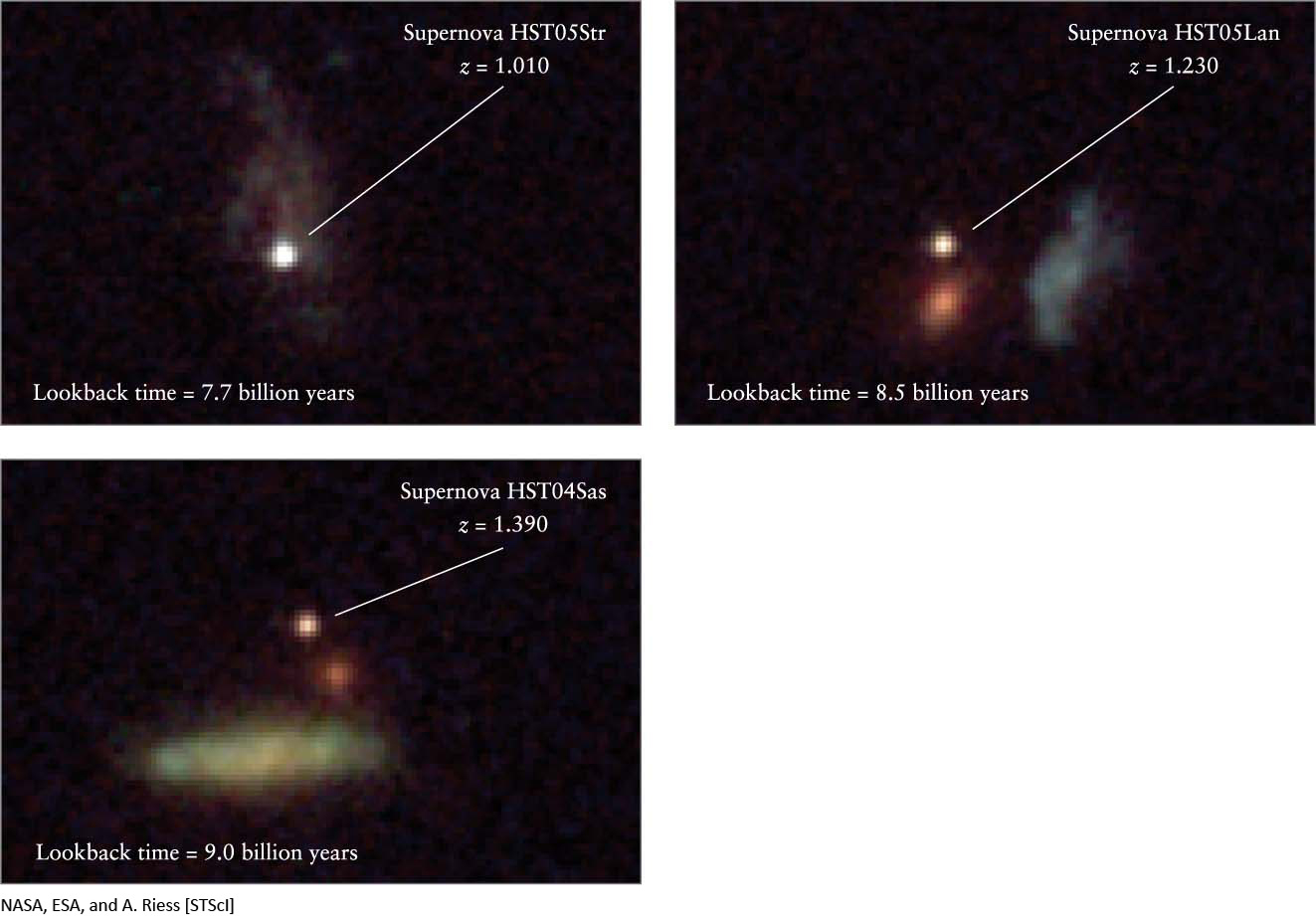359

Observing the Evolution of the Universe
CHAPTER LEARNING OBJECTIVES
By studying the sections of this chapter, you will learn:
- 15-1 The darkness of the night sky tells us about the nature of the universe
- 15-2 Our observations show us that the universe is expanding
- 15-3 The expanding universe emerged from a cataclysmic event called the Big Bang
- 15-4 The microwave radiation that fills all space is compelling evidence of a hot Big Bang
- 15-5 The universe was a rapidly expanding, hot, opaque plasma during its first 300,000 years and has slowly cooled
- 15-6 The shape of the universe indicates its matter and energy content
- 15-7 Observations of distant supernovae indicate that we live in an accelerating universe
360
So far in this book we have cataloged the contents of the universe. Our scope has ranged from submicroscopic objects, such as atomic nuclei, to superclusters of galaxies hundreds of millions of light-years across. In between, we have studied planets, moons, and stars.
But now we turn our focus beyond what we find in the universe to the nature of the universe itself—the subject of the science called cosmology. How large is the universe? What is its structure? How long has it existed, and how has it changed over time?
In this chapter we will see that the universe is expanding. This expansion began with an event at the beginning of time called the Big Bang. We will see direct evidence of the Big Bang in the form of microwave radiation from space. This radiation is the faint afterglow of a primordial fireball that filled all space shortly after the beginning of the universe.
Will the universe continue to expand forever, or will it eventually collapse back on itself? We will find that to predict the future of the universe, we must first understand what happened in the remote past. To this end, astronomers study luminous supernovae like the example shown in the photos that open this chapter. Supernovae can be seen across billions of light-years and can tell us about conditions in the universe billions of years ago. We will see how recent results from such supernovae, as well as from studies of the Big Bang’s afterglow, have revolutionized our understanding of cosmology and given us new insights into our place in the cosmos.